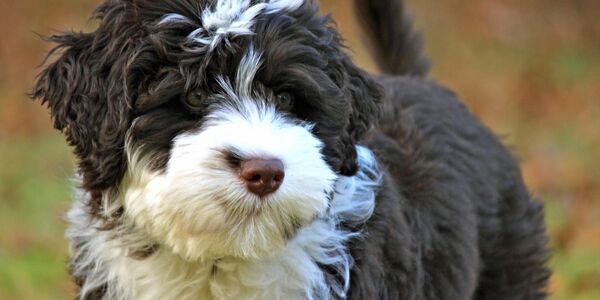Jackie and Scott Nelson, a dedicated and passionate couple residing in Melbourne, Florida, have built a stellar reputation for breeding stunning paint horses that captivate enthusiasts and experts alike. Their esteemed riding ranch, Down Under Colour, is renowned for producing championship-winning horses that consistently dominate the show ring and steal the spotlight at various equestrian events. However, despite their extensive experience and deep expertise in horse breeding, nothing could have prepared them for the extraordinary and unexpected surprise that Coconut, one of their newest fillies, brought into their lives.

Coconut is not just any horse; she is a marvel of nature with incredibly rare and distinctive color markings. These markings are not merely random patterns; they hold profound cultural significance. Coconut has been identified as a ‘War Horse,’ a term deeply rooted in Indigenous cultures and traditions.
To truly appreciate the significance of a War Horse, one must delve into the rich tapestry of Indigenous legends, particularly those from Plains mythology. Within these stories, the figure of the Medicine Man is a recurring and revered presence. The Medicine Man, both a spiritual guide and healer, was believed to possess the power to cure both physical and spiritual ailments of his tribe. His deep connection with nature, supernatural beings, and plants endowed him with extraordinary abilities.
When it came to choosing a steed, the Medicine Man would select only a specific type of horse: the War Horse. For a pinto to be recognized as a War Horse, it needed to exhibit particular markings and traits. The most crucial of these is the “Medicine Hat” or “War Bonnet” marking. This unique pattern involves the horse being predominantly white, with a small patch covering its ears and the top of its head. This distinctive marking is essential, but other features can elevate a horse to the esteemed status of a War Horse.
One significant marking for a War Horse is having at least one blue eye. Jackie elaborated on this, explaining that in Indigenous mythology, this is referred to as the ‘Sky Eye.’ Tribes believed that if a Medicine Man were to fall in battle, the blue eye of the horse would transport his spirit back to the Gods. This belief imbued the War Horse with an aura of mysticism and spiritual importance.

The War Horse was not just a symbol; Indigenous tribes believed it possessed special powers. They thought these horses could shield the Medicine Man during combat and alert other riders to impending threats. Moreover, they were seen as exceptional hunters with an uncanny ability to track down elusive game hidden in dense forests. The War Horse’s pristine white body served as an ideal canvas for Indigenous warriors to apply war paint. Just as warriors adorned themselves with paint, they did the same for their horses. Each symbol and pattern painted on the horse was believed to offer protection, ensure victory, and bring good fortune.
Some argue that a ‘true’ War Horse should also have a shield marking on its chest and specific patterns on its flanks. These additional markings further enhance the horse’s spiritual and protective qualities. For instance, a circle around the horse’s eye symbolized keen vision, while a handprint on its chest indicated that the horse had previously defeated an adversary. These markings were not merely decorative; they were deeply symbolic and carried significant meaning for the tribes.
When Jackie and Scott discovered that Coconut was a War Horse, they were spellbound. Recognizing the rarity and significance of their filly, they decided to share their joy with the world. They uploaded a video that, over the past five years, has garnered over 4 million views. Comments poured in from around the globe, praising the filly’s beauty and unique markings. People were fascinated by Coconut’s story and the rich cultural history she represented.

As time has passed, Coconut has grown, but her markings continue to captivate and impress. Her story is a testament to the wonders of nature and the deep-rooted cultural significance that animals can hold. Coconut’s markings are not just a beautiful pattern; they are a bridge to ancient legends and beliefs. Her presence at Down Under Colour adds a unique and mystical dimension to the ranch.
The Nelsons have embraced Coconut’s uniqueness and the cultural heritage she embodies. They have made it their mission to educate others about the significance of War Horses in Indigenous cultures. Through various platforms, including social media, educational programs at their ranch, and public speaking engagements, they share Coconut’s story and the rich history of War Horses. This outreach has sparked a broader interest in Indigenous cultures and the spiritual connections between humans and animals.

Coconut has become a symbol of pride for Down Under Colour. Visitors from all over come to see the legendary War Horse and learn about her extraordinary heritage. Children and adults alike are enchanted by her story, and she has inspired many to delve deeper into the world of horses and Indigenous traditions. The Nelsons’ ranch has become a beacon of cultural education and appreciation, fostering a deeper understanding and respect for the symbiotic relationship between humans and animals.
In conclusion, Coconut’s story is more than just a tale of a uniquely marked horse. It is a narrative that intertwines the beauty of nature with the rich cultural tapestry of Indigenous legends. Coconut, the War Horse with her Medicine Hat and Sky Eye, stands as a living testament to history and tradition. As she continues to grow and thrive at Down Under Colour, she remains a living embodiment of the profound connections that exist between humans, animals, and the spiritual world. The Nelsons’ dedication to preserving and sharing her story ensures that the legacy of the War Horse will continue to inspire and educate future generations.
Click the video below to watch this incredible story!
Please ‘SHARE’ to pass on this story to a friend or family member

 Toledo, United States.
Toledo, United States.
